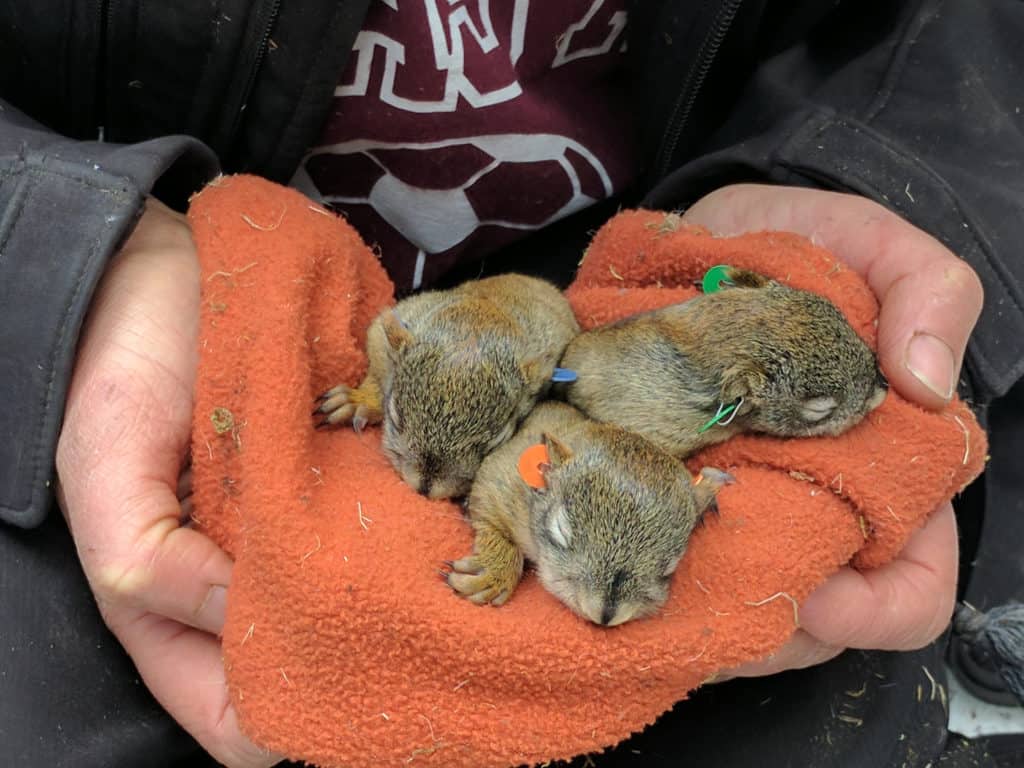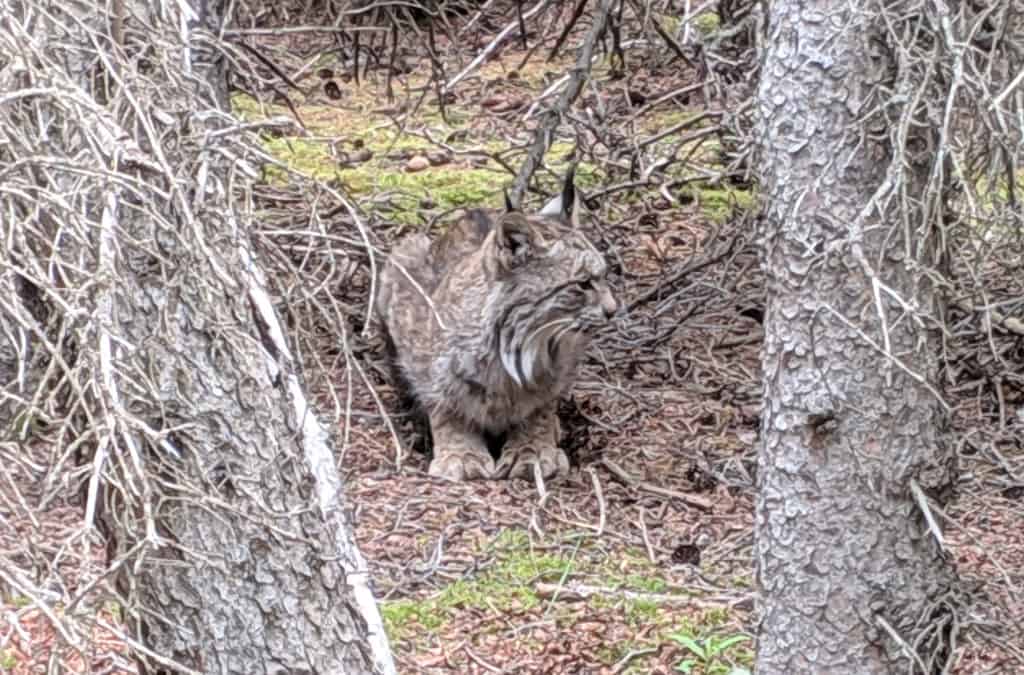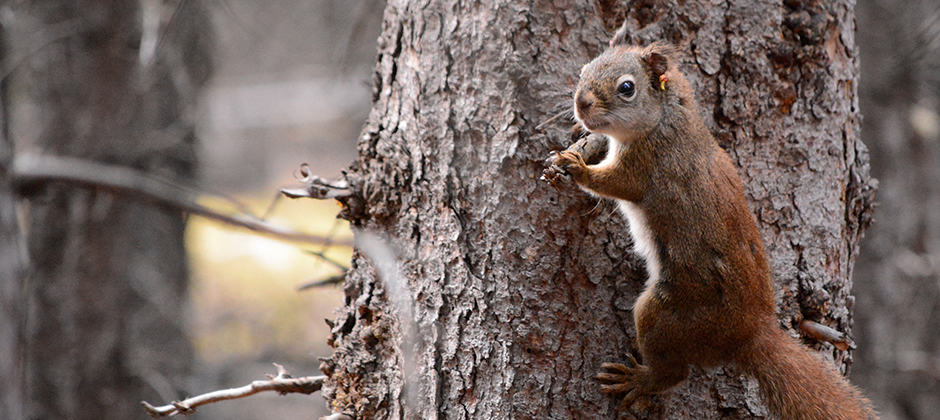Share this article
Acquiring territory helps young red squirrels survive
Hungry predators like lynx and weasels give young red squirrels a dim prospect of reaching adulthood. But acquiring a territory earlier in the summer may be the best strategy for young squirrels to survive.
“Faster growing and earlier born individuals were more likely to claim territory and survive over the winter,” said Jack Hendrix, a PhD student at Memorial University in Newfoundland and the lead author of a study published recently in the Journal of Animal Ecology.

Red squirrel pups at 25 days old are retrieved from their mother’s nest for tagging and measuring.
Credit: Jack Hendrix
North American red squirrels (Tamiasciurus hudsonicus) are found widely across Canada and the United States. After dispersing from their mothers, juvenile squirrels set out to acquire territory, ideally with plenty of seeds, mushrooms and other food.
While more is known about adult squirrel habits, it’s harder for researchers to observe juveniles, and little is known about why they have such low rates of survival in this period of their lives. Hendrix, who was a master’s student at the University of Guelph at the time of the research, set out with co-authors to learn more about this vulnerable period.
For their research, they used a population of red squirrels on Champagne-Aishihik First Nations on Champagne-Aishihik First Nations land near Kluane National Park in Yukon that has been studied for three decades. Every year, individuals are trapped and fitted with unique ear tags in nests, allowing researchers to track which juveniles survive.
The researchers also used data on population density and other ecological metrics such as predator abundance and spruce cone availability.
They found that territory acquisition was key for juvenile survival. If young squirrels obtained new territories early in the summer, just as spruce cones were ripening, they could take advantage of the crop.
But predator abundance also played a role. Juvenile squirrel survival was low when there were a lot of lynx (Lynx canadensis), least weasels (Mustela nivalis), short-tailed weasels (Mustela ermine) and American martens (Martes americana). Hendrix said these predators tend to cycle through a given area in the boreal forest in their pursuit of their main prey, snowshoe hares (Lepus americanus) or red-backed voles (Myodes Spp.). While in the area, they may also eat red squirrels they encounter, which means that the number of squirrels that survive to adulthood often changes year by year.

A Canada lynx sits on top of a red squirrel midden — the central cache of spruce cones in a squirrel’s territory. Credit: Jack Hendrix
The team also found that climate played a role in red squirrel survive to adulthood. Correlating their survival data with information about weather from Environment and Climate Change Canada, snow cover seemed to have little effect, but juvenile squirrels didn’t survive as well in colder weather.
Hendrix said this may be due to squirrels needing more spruce cones to survive the winter — those that don’t cache enough cones may not survive as well in colder years. Hendrix also said that climate change may affect the balance of lynx and their prey as well, but it’s unclear right now how this would affect juvenile squirrel survival.
While red squirrels are abundant in the boreal forest, their abundance is critical, because they provide alternative sustenance for predators like lynx when primary prey such as snowshoe hares are scarce, Hendrix said. Understanding more about what impacts their survival is important for understanding the larger ecosystems in which they live.
Header Image: Caption: An adult red squirrel clings to a spruce tree. Credit: Juliana Balluffi-Fry








